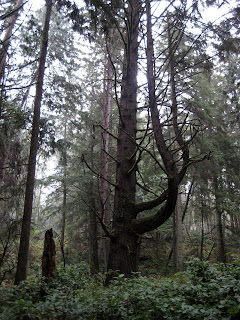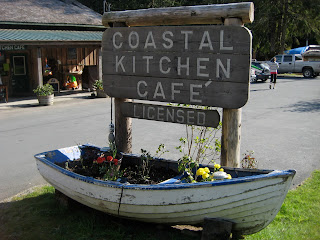WINTER CAMPING - the mere mention of it has my friends shaking their heads and asking WHY would you do such a thing.
I would do such a thing because I'm stiff from sitting indoors, my blackberry won't stop flashing and I don't want to go to another holiday party. Going to the West Coast gives my mind a break, frees me from my to-do lists and reminds me that I'm alive.
Getting outside when its raining, blowing, or snowing is a wonderful thing - provided you are prepared. That means layering your clothes, having lots to eat and the right gear.
We packed up our stuff on a Saturday morning and headed out for one night at French Beach Provincial Park - about 20 minutes west of Sooke along Highway 14. Only about a half dozen campers took advantage of the November weekend. The campground was our oyster.
We packed tarps, a good quality tent, warm sleeping bags, and water-proof clothing. And to make the trip more enjoyable - our portable DVD player, the 3rd season of Showtime's 'Californication' and a box of wine. With these items - you're guaranteed a good time under a stump! But in all honestly, when its pouring, having a large tarp is your best piece of equipment.
Don't let the possibly of rain - or even an actual downpour and freezing temperatures - deter you from winter camping. It can be just as much fun as the summer. Use your common sense and a little creativity. And no matter the season - a night in the outdoors really does renew your soul.
 |
| Lucky 13 campsite on November 13th |
 |
| Great fire but we forgot camping chairs |
 |
| Refreshing walk on the beach |



















































